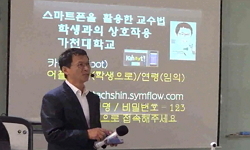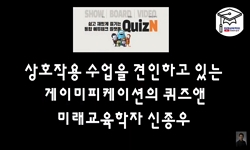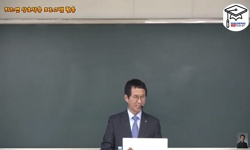The purpose of this study was to confirm the relationship between a team member's technological problem-solving inclination and team's interaction. In order to fulfill the research purpose, this study confirmed the team member's technological problem-...
http://chineseinput.net/에서 pinyin(병음)방식으로 중국어를 변환할 수 있습니다.
변환된 중국어를 복사하여 사용하시면 됩니다.
- 中文 을 입력하시려면 zhongwen을 입력하시고 space를누르시면됩니다.
- 北京 을 입력하시려면 beijing을 입력하시고 space를 누르시면 됩니다.

기술적 문제 해결 팀 활동에서 팀원의 기술적 문제 해결 성향과 상호작용의 관계 분석 = A Study on the Relationship between Team Member's Technological Problem-solving Tendency and Interaction
한글로보기https://www.riss.kr/link?id=A103800089
- 저자
- 발행기관
- 학술지명
- 권호사항
-
발행연도
2014
-
작성언어
Korean
- 주제어
-
등재정보
KCI등재
-
자료형태
학술저널
- 발행기관 URL
-
수록면
49-70(22쪽)
-
KCI 피인용횟수
6
- 제공처
-
0
상세조회 -
0
다운로드
부가정보
다국어 초록 (Multilingual Abstract)
In an effort to carry out an experiment, composed a total of 8 teams with 2~4 persons for 1 team by selecting 30 problem-solvers. Then, this study shot videos of the problem-solving process by testing the subject's problem-solving tendency and suggesting a technological problem in an independent space by each team. A problem is suggested to each team including piling up water-supply towers which belong to a design type. Each team solved the three problems by consuming 50 minutes respectively. On the basis of the 24 recorded videos with problem for 8 teams, 2 observers analyzed their interaction using IPA-an interaction analysis system.
Based on the interaction analysis data, this study found the correlation between interaction and team members' technological problem-solving tendency by classifying the interaction into the sub-factors of socio-emotional area and task area. In order to confirm the correlation between a team member's technological problem-solving tendency and team interaction, this study used Pearson's product moment correlation coefficient. In addition, this study used SPSS ver. 21 for statistical analysis.
When the interaction was classified according to team members' technological problem-solving tendency scores in the problem situation of making a water supply tower, it was found that access-evasion tendency scores were low and an efficient problem-solver performed the interaction like seeking advice.
The purpose of this study was to confirm the relationship between a team member's technological problem-solving inclination and team's interaction. In order to fulfill the research purpose, this study confirmed the team member's technological problem-solving tendency targeting the engineering education college students, and also confirmed the correlation between a team member's technological problem-solving tendency and a team interaction by analyzing a team interaction.
In an effort to carry out an experiment, composed a total of 8 teams with 2~4 persons for 1 team by selecting 30 problem-solvers. Then, this study shot videos of the problem-solving process by testing the subject's problem-solving tendency and suggesting a technological problem in an independent space by each team. A problem is suggested to each team including piling up water-supply towers which belong to a design type. Each team solved the three problems by consuming 50 minutes respectively. On the basis of the 24 recorded videos with problem for 8 teams, 2 observers analyzed their interaction using IPA-an interaction analysis system.
Based on the interaction analysis data, this study found the correlation between interaction and team members' technological problem-solving tendency by classifying the interaction into the sub-factors of socio-emotional area and task area. In order to confirm the correlation between a team member's technological problem-solving tendency and team interaction, this study used Pearson's product moment correlation coefficient. In addition, this study used SPSS ver. 21 for statistical analysis.
When the interaction was classified according to team members' technological problem-solving tendency scores in the problem situation of making a water supply tower, it was found that access-evasion tendency scores were low and an efficient problem-solver performed the interaction like seeking advice.
국문 초록 (Abstract)
이 연구의 결과 급수탑 만들기 문제 상황에서 접근-회피 성향 점수와 기술적 문제 해결 성향 점수가 의견을 구함의 상호작용과 부적 상관관계가 있는 것으로 나타났다. 이는 문제가 제시되었을 때 적극적으로 참여하는 해결자는 문제를 적극적으로 해결하기 위해 다른 구성원들에게 문제에 대한 의견을 구하는 상호작용을 더 많이 한다고 할 수 있다. 따라서 기술적 문제 해결 성향 중 접근-회피 성향을 고려하여 팀을 구성하여 팀별로 의견을 구하는 상호작용을 하는 문제 해결자가 포함되게 되어 보다 효율적인 팀 활동을 수행 할 수 있다.
이 연구는 기술적 문제 해결 성향과 상호작용의 상관관계를 확인하여 팀 활동에서 효율적인 팀 구성을 위한 기초자료를 제시하는데 있다. 이 연구의 목적을 달성하기 위해 공학교육 전공 대...
이 연구는 기술적 문제 해결 성향과 상호작용의 상관관계를 확인하여 팀 활동에서 효율적인 팀 구성을 위한 기초자료를 제시하는데 있다. 이 연구의 목적을 달성하기 위해 공학교육 전공 대학생 30명의 기술적 문제 해결 성향을 조사하고, 8개 팀으로 나누어 기술적 문제를 제시하였다. 그리고 기술적 문제를 해결하는 과정의 상호작용을 분석하였다.
이 연구의 결과 급수탑 만들기 문제 상황에서 접근-회피 성향 점수와 기술적 문제 해결 성향 점수가 의견을 구함의 상호작용과 부적 상관관계가 있는 것으로 나타났다. 이는 문제가 제시되었을 때 적극적으로 참여하는 해결자는 문제를 적극적으로 해결하기 위해 다른 구성원들에게 문제에 대한 의견을 구하는 상호작용을 더 많이 한다고 할 수 있다. 따라서 기술적 문제 해결 성향 중 접근-회피 성향을 고려하여 팀을 구성하여 팀별로 의견을 구하는 상호작용을 하는 문제 해결자가 포함되게 되어 보다 효율적인 팀 활동을 수행 할 수 있다.
참고문헌 (Reference)
1 김태훈, "효율적·비효율적 문제 해결자의 기술적 문제 해결 과정 비교 분석" 충남대학교 대학원 2007
2 송재준, "팀 협업과 정보교류체제가 성과에 미치는 영향 : 성숙도의 조절효과를 중심으로" 가천대학교 대학원 2013
3 김문주, "팀 다양성과 팀 공유감이 팀 효과성에 미치는 영향에 관한 연구 : 팀 학습의 매개효과를 중심으로" 이화여자대학교 대학원 2010
4 정은실, "팀 구성 방식에 따른 학습활동 만족도: 질적 자료 분석에 의한 사례연구" 한국교육방법학회 22 (22): 67-95, 2010
5 문대영, "초·중등학교 학생의 적응자·혁신자 역할 분담 문제해결 활동이 기술적 창의력 계발에 미치는 효과" 충남대학교 대학원 2001
6 조희영, "창의적인 디자인 팀 조직을 위한 구성원의 근원적 속성에 관한 연구" 한국과학기술원 2006
7 신지연, "집단창의성과 MBTI와의 관계 : 문화콘텐츠 기획집단을 중심으로" 한국과학기술원 2007
8 Donald C, Pennington, "소그룹 내 행동의 사회심리학" 시그마프레스(주) 2002
9 황설영, "문제해결검사의 타당화 연구 : 한국대학생의 진로결정수준을 중심으로" 연세대학교 대학원 2005
10 김태훈, "기술적 문제해결에서 MBTI 성격 유형과 팀 상호작용 간의 관계 분석" 한국기술교육학회 12 (12): 160-182, 2012
1 김태훈, "효율적·비효율적 문제 해결자의 기술적 문제 해결 과정 비교 분석" 충남대학교 대학원 2007
2 송재준, "팀 협업과 정보교류체제가 성과에 미치는 영향 : 성숙도의 조절효과를 중심으로" 가천대학교 대학원 2013
3 김문주, "팀 다양성과 팀 공유감이 팀 효과성에 미치는 영향에 관한 연구 : 팀 학습의 매개효과를 중심으로" 이화여자대학교 대학원 2010
4 정은실, "팀 구성 방식에 따른 학습활동 만족도: 질적 자료 분석에 의한 사례연구" 한국교육방법학회 22 (22): 67-95, 2010
5 문대영, "초·중등학교 학생의 적응자·혁신자 역할 분담 문제해결 활동이 기술적 창의력 계발에 미치는 효과" 충남대학교 대학원 2001
6 조희영, "창의적인 디자인 팀 조직을 위한 구성원의 근원적 속성에 관한 연구" 한국과학기술원 2006
7 신지연, "집단창의성과 MBTI와의 관계 : 문화콘텐츠 기획집단을 중심으로" 한국과학기술원 2007
8 Donald C, Pennington, "소그룹 내 행동의 사회심리학" 시그마프레스(주) 2002
9 황설영, "문제해결검사의 타당화 연구 : 한국대학생의 진로결정수준을 중심으로" 연세대학교 대학원 2005
10 김태훈, "기술적 문제해결에서 MBTI 성격 유형과 팀 상호작용 간의 관계 분석" 한국기술교육학회 12 (12): 160-182, 2012
11 조한진, "기술적 문제해결 성향과 MBTI 성격 유형 간의 관계 분석 연구" 한국기술교육학회 12 (12): 110-129, 2012
12 조한진, "공학 교육 전공 대학생의 기술적 문제 해결 성향과 기술적 문제 해결력 간의 관계 분석" 충남대학교 2013
13 Katzenbach, J. R., "The wisdom of teams: Creating the high-performance organization" Harvard Business Press 1992
14 Pirola‐Merlo, A., "The relationship between individual creativity and team creativity: Aggregating across people and time" 25 (25): 235-257, 2004
15 Heppner, P. P, "The problem solving inventory: Manual" Consulting Psychologists Press 1988
16 Heppner, P. P., "The development and implications of a personal problem-solving inventory" 29 : 66-75, 1982
17 Wu, T. F., "Technological and Personal Problem Solving Styles : Is there a Difference?" 7 (7): 55-71, 1996
18 Bandura, A, "Social learning theory" Prentice Hall 1977
19 Belbin, L, "Semi‐strong Hybrid Scaling, a new ordination algorithm" 2 (2): 491-496, 1991
20 Ritchey, K. M., "Problem-solving appraisal versus hypothetical problem solving" 55 (55): 815-818, 1984
21 Webb, N. M, "Peer interaction and learning in cooperative small groups" 74 (74): 642-, 1982
22 Webber, S. S., "Impact of highly and less job-related diversity on work group cohesion and performance : A meta-analysis" 27 (27): 141-162, 2001
23 Webb, N. M, "Group composition, group interaction, and achievement in cooperative small groups" 74 (74): 475-, 1982
동일학술지(권/호) 다른 논문
-
예비 기술 교사들의 창의공학설계 수업에 대한 인식 연구
- 한국기술교육학회
- 김성일
- 2014
- KCI등재
-
- 한국기술교육학회
- 김영훈
- 2014
- KCI등재
-
- 한국기술교육학회
- 문선영
- 2014
- KCI등재
-
기술교사 학습공동체의 참여 동기와 교수 전문성 개발에 관한 연구
- 한국기술교육학회
- 함형인
- 2014
- KCI등재
분석정보
인용정보 인용지수 설명보기
학술지 이력
| 연월일 | 이력구분 | 이력상세 | 등재구분 |
|---|---|---|---|
| 2026 | 평가예정 | 재인증평가 신청대상 (재인증) | |
| 2020-01-01 | 평가 | 등재학술지 유지 (재인증) |  |
| 2017-01-01 | 평가 | 등재학술지 유지 (계속평가) |  |
| 2014-01-08 | 학술지명변경 | 외국어명 : 미등록 -> THE KOREAN JOURNAL OF TECHNOLOGY EDUCATION |  |
| 2013-01-01 | 평가 | 등재학술지 유지 (등재유지) |  |
| 2010-01-01 | 평가 | 등재학술지 유지 (등재유지) |  |
| 2007-01-01 | 평가 | 등재학술지 선정 (등재후보2차) |  |
| 2006-01-01 | 평가 | 등재후보 1차 PASS (등재후보1차) |  |
| 2004-01-01 | 평가 | 등재후보학술지 선정 (신규평가) |  |
학술지 인용정보
| 기준연도 | WOS-KCI 통합IF(2년) | KCIF(2년) | KCIF(3년) |
|---|---|---|---|
| 2016 | 1.52 | 1.52 | 1.72 |
| KCIF(4년) | KCIF(5년) | 중심성지수(3년) | 즉시성지수 |
| 1.66 | 1.72 | 2.247 | 0.44 |




 KCI
KCI






